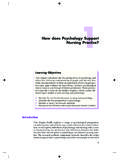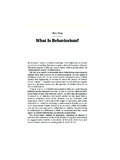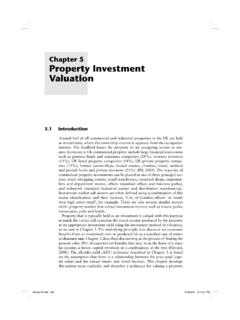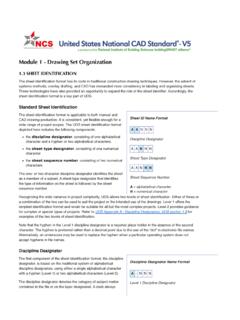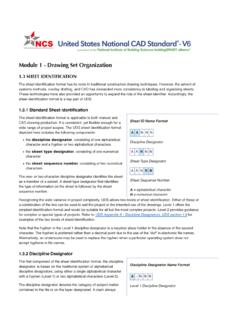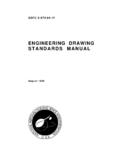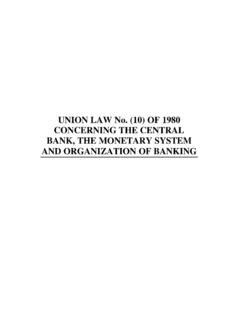Transcription of INTRODUCTION: WHAT IS STRATEGIC …
1 CHAPTER 1 INTRODUCTION: WHAT ISSTRATEGIC management ?What is Strategy?The term strategy proliferates in discussions of business. Scholars and consultantshave provided myriad models and frameworks for analysing STRATEGIC choice(Hambrick and Fredrickson, 2001). For us, the key issue that should unite all dis-cussion of strategy is a clear sense of an organization s objectives and a sense ofhow it will achieve these objectives. It is also important that the organization hasa clear sense of its distinctiveness. For the leading strategy guru, Michael Porter(1996), strategy is about achieving competitive advantage through being different delivering a unique value added to the customer, having a clear and enactableview of how to position yourself uniquely in your industry, for example, in the ways in which Southwest Airlines positions itself in the airline industry and IKEAin furniture retailing, in the way that Marks & Spencer used to.
2 To enact a successful strategy requires that there is fit among a company s activities, that theycomplement each other, and that they deliver value to the firm and its three companies we have just mentioned illustrate that industries are fluidand that success is not guaranteed. Two of the firms came to prominence by taking on industry incumbents and developing new value propositions. The thirdwas extremely successful and lost this position. While there is much debate on substance, there is agreement that strategy is concerned with the match betweena company s capabilities and its external environment. Analysts disagree on howthis may be done. John Kay (2000) argues that strategy is no longer about plan-ning or visioning because we are deluded if we think we can predict or, worse, control the future it is about using careful analysis to understand andinfluence a company s position in the market place.
3 Another leading strategy guru, Gary Hamel (2000), argues that the best strategy is geared towards radicalchange and creating a new vision of the future in which you are a leader ratherthan a follower of trends set by others. According to Hamel,winning strategy =foresight + 6/2/04 2:08 PM Page 12 INTRODUCTIONTwo Approaches to StrategyThe idea of strategy has received increasing attention in the management literat-ure. The literature on strategy is now voluminous and STRATEGIC management textsgrow ever larger to include all the relevant material. In this book our aim is notto cover the whole area of strategy that would require yet another mammoth tome but to present a clear, logical and succinct approach to the subject that will beof use to the practising manager. We do not attempt a summary of the field, ratherwe present what we see as a useful framework for analysing STRATEGIC problems basedon our own experience of teaching the subject on a variety of courses and to avariety of audiences over the years.
4 Our premise is that a firm needs a well definedsense of its mission, its unique place in its environment and scope and directionof growth. Such a sense of mission defines the firm s strategy. A firm also needsan approach to management itself that will harness the internal energies of theorganization to the realization of its , views of strategy fall into two camps. There are those who equatestrategy with planning. According to this perspective, information is gathered, siftedand analysed, forecasts are made, senior managers reflect upon the work of theplanning department and decide what is the best course for the organization. Thisis a top-down approach to strategy. Others have a less structured view of strategyas being more about the process of management . According to this second per-spective, the key STRATEGIC issue is to put in place a system of management that willfacilitate the capability of the organization to respond to an environment that isessentially unknowable, unpredictable and, therefore, not amenable to a planningapproach.
5 We will consider both these views in this text. Our own view is that goodstrategic management actually encompasses elements of each is no one best way of strategy. The planning approach can work in a stable, predictable environment. Its critics argue that such environments arebecoming increasingly scarce, events make the plan redundant, creativity is buried beneath the weight and protocols of planning and communication , those not involved in devising the plan are never committed to its implementation. The second approach emphasizes speed of reaction and flexibility to enable the organization to function best in an environment that isfast-changing and essentially unpredictable. The essence of strategy, according tothis view, is adaptability and incrementalism. This approach has been criticized forfailing to give an adequate sense of where the organization is going and what itsmission is.
6 Critics speak disparagingly of the mushroom approach to management .(Place in a dark room, shovel manure/money on the seeds, close the door, waitfor it to grow!)Elements of StrategyDefinitions of strategy have their roots in military strategy, which defines itself interms of drafting the plan of war, shaping individual campaigns and, within these,SMC01 6/2/04 2:08 PM Page 2 INTRODUCTION3deciding on individual engagements (battles/skirmishes) with the enemy. Strategyin this military sense is the art of war, or, more precisely, the art of the general the key decision maker. The analogy with business is that business too is on a warfooting as competition becomes more and more fierce and survival more and armies have much in common. They both, for example, pursuestrategies of deterrence, offence, defence and alliance. One can think of a welldeveloped business strategy in terms of probing opponents weaknesses; with-drawing to consider how to act, given the knowledge of the opposition generatedby such probing; forcing opponents to stretch their resources; concentrating one s own resources to attack an opponent s exposed position; overwhelmingselected markets or market segments; establishing a leadership position of domin-ance in certain markets; then regrouping one s resources, deciding where to make the next thrust; then expanding from the base thus created to dominate abroader thinking has been much influenced by military thinking about the strategy hierarchy of goals, policies and programmes.
7 Strategy itself sets theagenda for future action, STRATEGIC goals state what is to be achieved and when (butnot how), policies set the guidelines and limits for permissible action in pursuit ofthe STRATEGIC goals, and programmes specify the step-by-step sequence of actionsnecessary to achieve major objectives and the timetable against which progress can be measured. A well defined strategy integrates an organization s major plans,objectives, policies and programmes and commitments into a cohesive whole. Itmarshals and allocates limited resources in the best way, which is defined by ananalysis of a firm s unique strengths and weaknesses and of opportunities and threatsin the environment. It considers how to deal with the potential actions of intelli-gent is defined both in terms of its function as those activities that serveto ensure that the basic objectives of the enterprise, as set by the strategy, are achieved,and as a group of senior employees responsible for performing this function.
8 Our working definition of STRATEGIC management is as follows: all that is necessaryto position the firm a way that will assure its long-term survival in a competitiveenvironment. A strategy is an organization s way of saying how it creates uniquevalue and thus attracts the custom that is its understand the strategy of a particular firm we have to understand, unlesswe are in a start-up situation, what factors have made the firm what it is today. Thisinvolves answering questions such as: How did the organization reach its presentstate? Why is it producing its particular range of products and services? What kindof products or services does it intend to produce in the future the same or dif-ferent, and, if different, how different? If it is thinking of altering its current range, what are the reasons?
9 Strategy usually reflects the thinking of a small groupof senior individuals, or even one strong leader, the STRATEGIC apex of a are the people who make up the STRATEGIC apex in this position? How do theythink? Are there other (more) fertile sources of STRATEGIC thinking elsewhere in the organization that could be usefully tapped? If necessary how can one go about learning from the collective wit of the organization, the creative voice that so often remains silent? How are decisions made in the organization? What is its SMC01 6/2/04 2:08 PM Page 34 INTRODUCTION management style top-down or bottom-up, autocratic or democratic? Why is the organization structured in a particular way? What is the link between strategy andstructure?TASKA pply these questions to your own organization or to an organization thatyou know.
10 (We will return to them later!)Our Model of StrategyOur working model of the STRATEGIC management process is set out in figure is a model that works for us in terms of organizing our thinking about strat-egy and our attempts to understand the STRATEGIC issues facing particular firms. Wedo not suggest that it is the only model that is useful or that this is the best. (Wejust think it is!) Hopefully, in the course of your reading of this book, and otherwork on the subject, you will be critically analysing the various models suggestedEnvironmentalanalysisGeneral environmentOperating environmentCompetitive positioningDirections for developmentStrategichistoryCurrentstrate gyStakeholder analysisStrategic visionChosenstrategyRealizedstrategyOrga nizationalanalysisStructureValuesCulture ResourcesStrengthsWeaknessesOpportunitie sThreatsFigure STRATEGIC management processSMC01 6/2/04 2:08 PM Page 4 INTRODUCTION5and the concepts upon which they rest.




